The Kodak Luma 400 is an excellent portable projector that shines in certain areas while falling short in others. Its tiny, lightweight form makes it ideal for carrying around; you’ll almost surely find room for it in your knapsack. The gadget is also quite simple to set up and includes an easy-to-use operating system and a remote that doesn’t bog you down with a plethora of needless buttons.
The Kodak remote mobile app is even better. It makes it simple to view your favorite streaming services. You may also utilize the projector to improve your mobile gaming experience with screen mirroring. Sadly, the Kodak Luma 400 falls short where it counts. We would have wanted to see more visible enhancements to the projector’s images and audio for the price ($450 / £450).
The 720p image is OK, but the lack of HDR functionality and poor brightness means you’ll have to wait till it’s rather dark to watch things at a reasonable size.
Furthermore, even in complete darkness, nocturnal sequences of films and shows seen with this projector might be very hard to follow – the actors and environment become unintelligible forms due to the inadequate contrast. Using the Kodak Luma 400 at maximum brightness can assist, but you’ll run out of battery life. You’ll be lucky to go through a feature-length film if you can’t plug this into a power source.
To put it plainly, the audio is likewise subpar. Even a low-cost Bluetooth speaker can significantly increase the music quality, but it’s a pity you have to sacrifice mobility to pay for what should be a basic function.
What will you see here?
Price and Availability

The Kodak Luma 400 is available for $450 / £450 in the United States, and the United Kingdom.
This is significantly more expensive than its predecessor, the Kodak Luma 350, which sells for roughly $330 / £300. However, it is less than half the cost of the Samsung The Freestyle portable projector ($899 / £999).
It’s not a ridiculous asking price. However, it might be difficult to explain the price rise over the Kodak Luma 350 because it’s not much of an enhancement in most ways. The Luma 400 is 50 lumens brighter and has a higher quality image. Although, for many applications, saving some money may be a better option than purchasing the newest Kodak projector.
Design
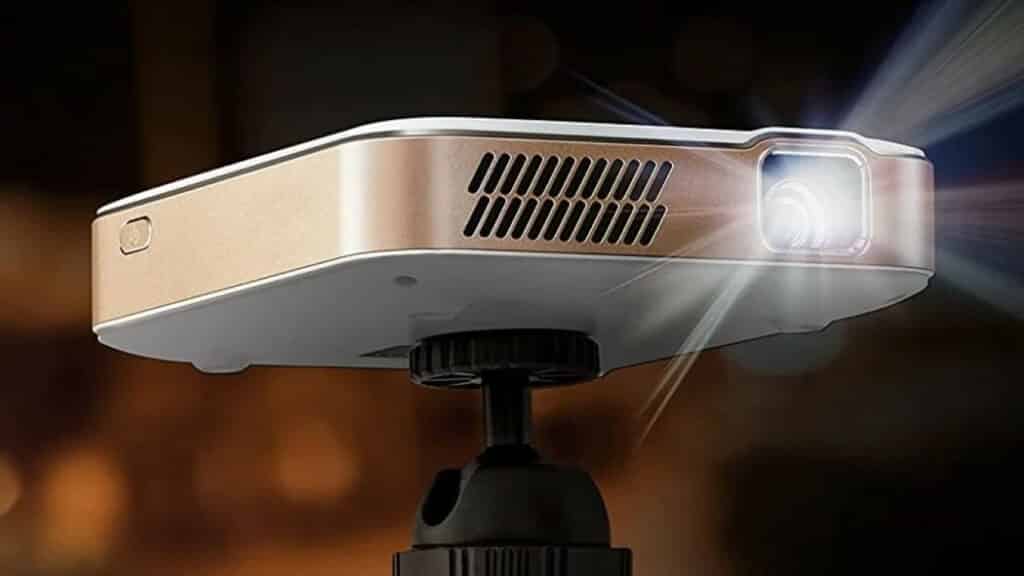
The projector head of the Kodak Luma 400 is fairly sleek, with an almost sci-fi look evocative of a Star Wars droid and pretty close to the Luma 350. Unfortunately, the projector’s stand feels quite plasticky, undermining the device’s considerably more expensive appearance. The stand at least offers superb articulation and support, which more than pays for its lack of fashion.
In terms of more practical design components, the projector head incorporates various connectors and controls. On the sides, there’s a focus wheel and an on/off button, with menu options on the top.
Ports
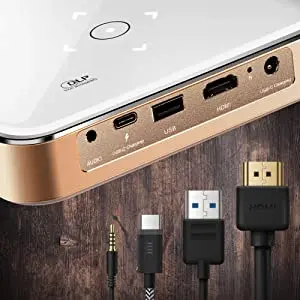
A 3.5mm audio outlet for headphones and speakers, a USB-C charging port for the projector, a USB connector to connect to a USB stick or charge your smartphone, an HDMI port, and a DC charging cable port are located on the rear. Given that the Kodak Luma 400 intends to be a portable projector, this number of ports is it is more than plenty for the number of devices you’ll want to bring with you.
Compact Size

Given that Kodak’s portable projector is thin and compact. The head measures 4.9-inch x 4.9-inch x 1.26-inch and weighs just 636g (1.4lbs) with the stand. You’d have room to bring along additional media devices, all of which would help you create a reasonably competent cinema setup.
Connectivity
For those who despise cords, the Luma 400 has a Bluetooth connection. This lets you connect to other devices such as speakers and enhance your Kodak Luma 400-powered movie experience.
Remote Controller

The Kodak Luma 400 controller is likewise pretty good quality. Its minimalistic button layout provides you with precisely what you need and a little more. The one significant concern is that it does not light up, making it hard to see what you’re doing in low-light situations.
It’s recommended to utilize the Kodak Luma remote software on your smartphone to solve this problem and increase the projector’s general functioning.
Features

Rather than Android TV, Kodak uses Android OS 9, an open-source edition of Android. The operating system is simple to use and provides compatibility for several of the greatest streaming services available, such as Netflix and Apple TV.
If you don’t want to log into all of your subscriptions on a new device, you may wirelessly link your smartphone to the projector and cast what you’re watching onto the big screen. This is accomplished using either Airplay on an iPhone or iPad or the screen mirroring capability of the Kodak Luma remote software.
Mirroring also enables you to project games and apps, which adds additional value to projector casting choices, which are normally related to video services. Because it must be utilized in a range of diverse contexts, a portable projector must be adaptable. As a result, the Kodak Luma 400 includes a plethora of simple-to-use options that allow you to configure the projector to best fit your viewing needs.
The digital zoom allows you to generate images that are precisely the appropriate size for your monitor. Manual keystone correction allows you to mold the screen to the desired form. Also, the focus slider maintains the image as clearly as possible. There’s also the opportunity to choose multiple projection settings based on whether your projector is behind or in front of the display, as well as whether it’s on the ground or suspended from the ceiling.
Battery Life
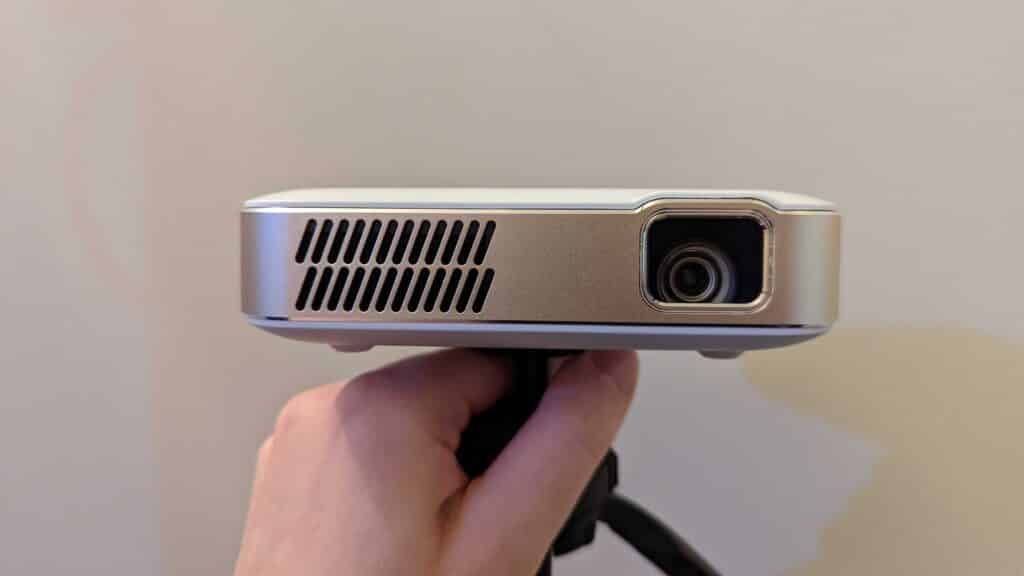
You can also choose different brightness settings. However, even in Eco Mode, you’ll want to carry a portable charging pack if you’re going to be using the Kodak Luma on the road.
The projector fell well short of Kodak’s 3-hour battery life. If you’re planning to utilize this projector to add a movie night to your next outdoor adventure, you might be disappointed – especially if you want to crank up the brightness.
Picture and Audio quality
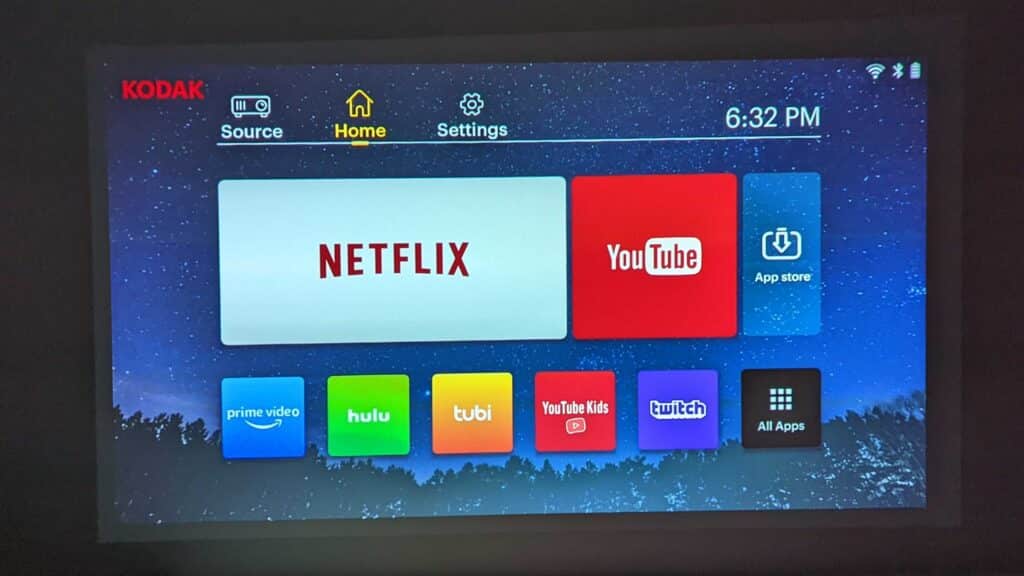
In a nutshell, the image quality is poor. Most people nowadays are watching movies and TV shows at 1080p, if not 4K. Returning to the blurrier 720p might be startling, especially if you’re watching at a maximum screen size of 150-inches.
Given that this is a portable projector, a resolution decrease is to be expected. However, there are cheaper small choices that perform just as well as the Luma in this respect. The Kodak Luma 400, which is more expensive than comparable versions on the market, provides more bang for your dollars.
Furthermore, with just 200 lumens of brightness available, you’ll need to watch in a dark area or bring the projector nearer to the screen if you want to see what’s going on.
The audio quality of the Kodak Luma 400 is awful. The sound has a really flat, empty tone to it, which dampens even lively melodies.
However, utilizing an inexpensive Bluetooth speaker is more than adequate for improving audio performance. Also, the audio jack works well as well if you’re interested in the more personalized experience that wearing headsets provides.
Conclusion
If you need a portable projector that is as light as possible, enables both built-in streamings, and provides the added clarity and visual sharpness that 720p provides, even with soft focus, the Kodak Luma 400 is a more than the respectable alternative. Its tiny size and lightweight construction make it a simple addition to your next outdoor adventure. However, if you’re on a strict budget or looking for a high-performance choice, you might want to look elsewhere.


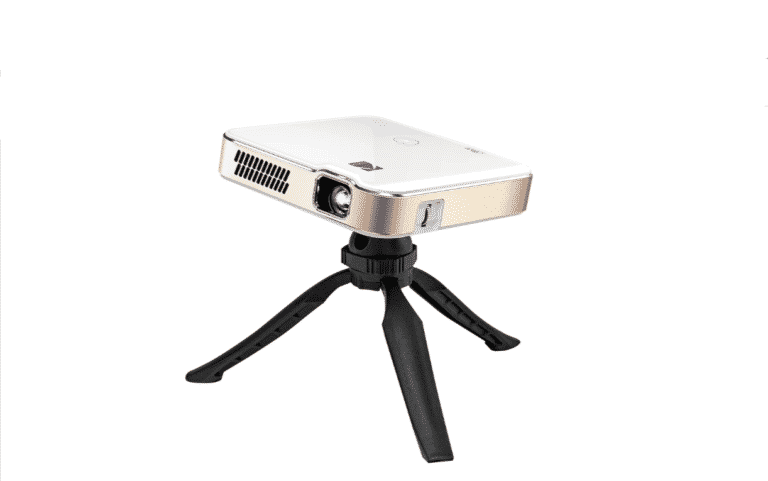
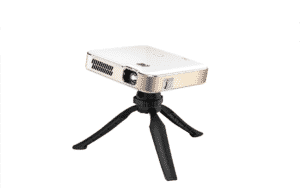













1 Response
I think the Kodak Luma 400 is a decent projector but I still believe that, for what it offers, it might be just a bit too expensive. I frankly much prefer the LG PF50KS, even if it’s a bit more expensive than the Luma 400. In the case of the PF50KS, I think that the price is worth it. I guess it depends on how much money people are willing to spend on a portable projector.